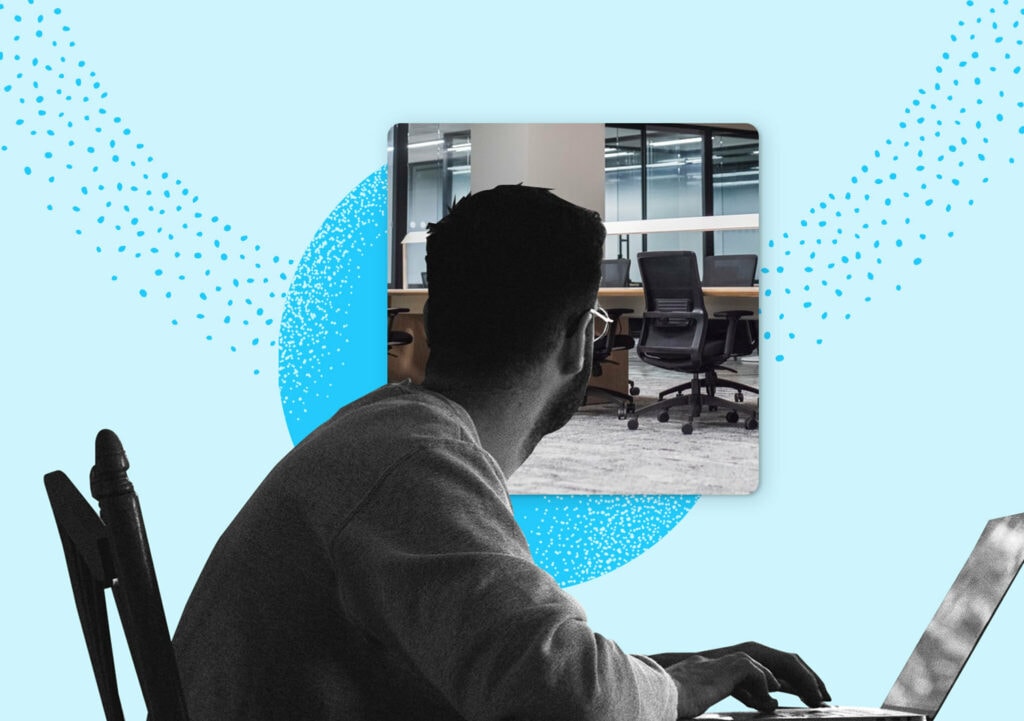As reported by The New York Times, when Google employees returned to the office earlier this month, the company emphasized the balance between fun and work. Of course, in typical Google fashion, the RTO (return-to-office) included tons of swag and food—and the rumours are true; Google employees were also invited to a private performance by pop sensation Lizzo.
While most organizations’ RTO will be a bit more subdued, returning to the office post-COVID should still strike a balance between work and fun. After all, a number of employees have gotten used to working from home and are reluctant to return to the office for a variety of reasons.
Most employees—80% according to McKinsey—actually enjoy working from home, with 41% reporting that they’re more productive at home and 28% feeling just as productive as when working from the office. Additional research also indicates that upwards of 60% of employees “would consider leaving their jobs if they could not work from home or were forced to work in the office more than they wanted to”.
To sum up the data, employees may need to be incentivized to embrace RTO.
What does the office offer that working from home can’t? Of course, we know that in-person work is great for collaboration, but with virtual tools and our adaptable human nature, is that truly the best selling point? Or most convincing?
If you want your employees to be excited about returning to the office post-COVID, companies have to figure out ways to make the return exciting and worthwhile—while recognizing that not everyone is in favour of returning to the office post-COVID. The New York Times writes that organizations should focus on “rewarding workers for coming into the office rather than punishing them for staying home”.
First things first, health and safety. In order for employees to feel happy about returning to the office post-COVID, they also need to feel safe.
Your organization must have clear COVID-policies and safety plans in place. Here are some of the essential aspects to consider when creating a COVID safety plan:
- How will your workspace be sanitized and how often?
- Will you require proof of vaccination/negative test results to work in the office?
- What will the procedure be if an employee tests positive/has symptoms/is a close contact of a confirmed positive case?
- Are you still recommending or requiring masks?
Of course, these are only a few examples of the considerations about returning the office post-COVID. Different workspaces and employees will have different needs and considerations.
In many instances, employees have had more than two years to perfect their at-home work setups. Consider how your organization’s office space compares and how you can make working in the office preferable.
In the first months of transitioning to work from home in 2020, many employees struggled to make it work. From sharing work spaces with roommates, working from the couch or the kitchen table, and having to deal with new disruptions and distractions, many employees didn’t have an ideal setup. Now, however, more than two years into the pandemic, employees have found a routine that works for them… at home.
Returning to the office post-COVID should make employees feel productive and at ease. The set-up should be conducive to getting their work done and getting it done effectively. It’s natural to miss working from home as employees transition back to the office, but if they’re missing their own set-up? That could be an issue.
McKinsey writes that “organizations [should] create workspaces specifically designed to support the kinds of interactions that cannot happen remotely”. For example, “if the primary purpose of an organization’s space is to accommodate specific moments of collaboration rather than individual work” then perhaps the majority of the office space should be dedicated to space for collaboration.
Organizations should also try to offer set-ups that most employees either won’t have at home or miss having at home: sit-stand desks, dual monitors, the ability to seamlessly video conference with anyone working remotely, happy hour drinks, catered lunches, snacks on hand, etc..
Whereas office perks used to be just that, perks, they’re actually now essential offerings to entice employees to work from the office.
Here are some perks that you can offer to help encourage employees to work from the office:
- Don’t underestimate the power of free food/drinks. Whether you offer free food and drinks as a part of a welcome back party or on a more regular basis, meals can be a major draw for employees.
- Offering transportation subsidies can go a long way to help employees get to work. Particularly with the high prices of fuel, offering employees gas cards, discounted rates for transit, or helping organize carpools can ensure employees’ commutes are more manageable.
- Plan fun and beneficial activities. Host activities in the office during work hours that employees can participate in. Think lunch-and-learns, pizza parties, hobby classes, etc. that employees would be excited to attend.
- Don’t forget about the ambiance. An often overlooked aspect of creating a pleasing workplace atmosphere is ambiance. Try to create an environment where employees can feel relaxed. Provide lots of seating and working options, don’t jam employees too close to one another, try to have nice lighting, plants and art, etc..
- Flexibility isn’t a perk, but an essential part of the return to workplaces. Allow employees as much flexibility as possible when setting their working hours and prioritizing tasks.
When it comes to returning to the office post-COVID, one-size-fits-all will not fit all. So it’s essential to know your people and check in with them regularly. Consider providing employees with a survey to gauge their comfort level with returning to the office and determine the best way to create a positive in-office experience as you transition from WFH to WFO.



